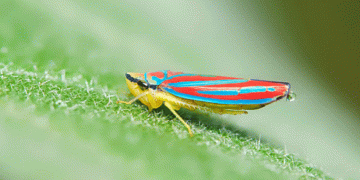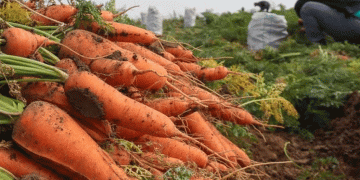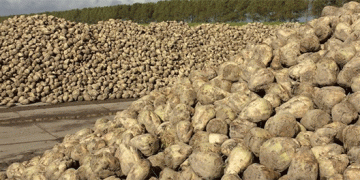The monsoon season is a double-edged sword for vegetable growers. While the rains provide essential moisture and spur abundant growth, they also create ideal conditions for a host of pests and diseases. High humidity and dampness trigger outbreaks of aphids, whiteflies, slugs, snails, and caterpillars, alongside fungal infections like powdery mildew and root rot. While chemical pesticides offer a quick fix, they devastate soil health, harm crucial beneficial insects, and can lead to pesticide resistance—a growing problem globally. Instead, a systems-based organic approach offers a more sustainable and effective path to monsoon resilience, protecting both your harvest and the garden’s ecological balance.
The following seven strategies are grounded in integrated pest management (IPM) principles and agroecological science:
1. Deploy a Biological Army: Beneficial Insects
The foundation of organic pest control is harnessing nature’s own predators. Ladybirds, lacewings, and hoverflies are voracious consumers of aphids, while parasitic wasps target caterpillars. A study published in Agriculture, Ecosystems & Environment found that fields with high beneficial insect diversity saw pest populations reduced by 40-70%. Attract these allies by planting insectary borders of nectar-rich flowers and herbs like coriander, dill, fennel, and marigolds.
2. Whip Up Effective Homemade Repellents
Simple, natural sprays can deter pests without collateral damage. Neem oil is a powerhouse, its active compound, azadirachtin, disrupting the hormone systems of hundreds of pest species. A diluted solution (5ml neem oil + 2-3 drops mild soap per liter of water) is highly effective. Similarly, sprays made from blended garlic and chili peppers act as potent broad-spectrum repellents by irritating pests’ senses.
3. Outsmart Pests with Strategic Planting
Crop rotation is a non-negotiable practice; it prevents soil-borne pathogens and pests that specialize in one plant family from establishing themselves. Intercropping (companion planting) adds another layer of defense by creating a confusing olfactory landscape for pests. For example, intercropping onions with carrots can reduce carrot fly infestation by 30-40%, according to research from the Rodale Institute.
4. Enforce Impeccable Garden Hygiene
Sanitation is a first line of defense. Remove fallen leaves, fruit, and weeds promptly—they are prime breeding sites. Ensuring excellent drainage is critical to prevent waterlogging, which suffocates roots and promotes fungal diseases. Watering early in the day allows foliage to dry completely, significantly reducing the risk of fungal spore germination.
5. Erect Physical and Trapping Barriers
Sometimes, the simplest solutions are the best. Fine mesh netting creates an impenetrable barrier against flying insects. Copper tape around beds delivers a mild electric charge that repels slugs and snails. Beer traps sunk at soil level exploit slugs’ attraction to yeast, luring them away from plants and drowning them.
6. Build Innate Resilience Through Soil Health
Healthy plants grown in vibrant soil are naturally more resistant to pests and diseases. Feed the soil with compost, vermicompost, and aged manure to build robust organic matter and a diverse microbiome. This supports stronger cell walls and overall plant vigor. Avoid synthetic nitrogen fertilizers, which promote soft, sappy growth that is highly attractive to aphids and other sucking insects.
7. Conduct Regular Ecosystem Monitoring
The most powerful tool is observation. Scout your garden at least twice a week during the monsoon. Examine the undersides of leaves for eggs, look for sticky honeydew (a sign of aphids), and identify the earliest signs of fungal spots. Early intervention is key; removing a few affected leaves or spot-spraying early can prevent a full-blown infestation.
Managing monsoon pests organically is not about finding a single magic bullet but about building a diversified, resilient ecosystem. This approach requires a shift in mindset—from reacting to pests with chemicals to proactively creating a garden environment where pests are naturally kept in check by their predators, by plant health, and by strategic design. This method is not only safer for your family and the environment but also more sustainable in the long term, fostering a productive garden that thrives in harmony with nature, even during the most challenging seasons.
































